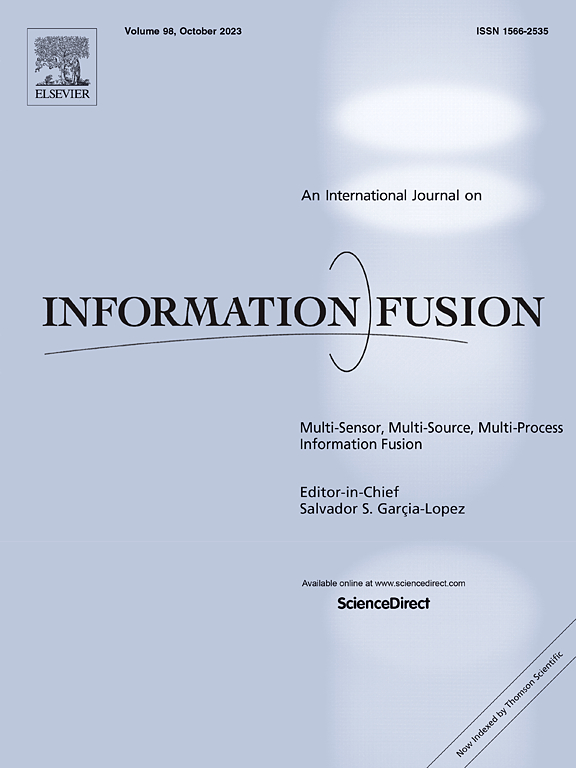Modality-perceptive harmonization network for visible-infrared person re-identification
IF 14.7
1区 计算机科学
Q1 COMPUTER SCIENCE, ARTIFICIAL INTELLIGENCE
引用次数: 0
Abstract
Visible-infrared person re-identification (VI-ReID) remains a challenging task due to the inconsistencies in data distribution and semantic inconsistency between heterogeneous modalities. Some visible-infrared person re-identification methods that leverage auxiliary modalities have achieved significant progress. However, these methods merely apply pixel-level augmentation to the original images and neglect dynamic modeling of modality-shared information, limiting their ability to reconcile modality discrepancies and capture cross-modal semantic correspondences. To address this, this paper proposes a Modality-perceptive Harmonization Network (MHN) to achieve feature-level harmonization through leveraging the coherences between visible and infrared modalities. Specifically, to alleviate domain discrepancies, a Modality-Perceptive Aggregation Module (MAM) is proposed to explicitly capture cross-modality consistency between heterogeneous modalities , thereby facilitating the adaptive fusion process of a harmonious hybrid modality and the extraction of reliable modality-shared features. Moreover, the modality harmonization loss is proposed to adjust the distribution of the generated hybrid modality and align the feature distributions across modalities. To address the issue of semantic inconsistency, a Dimensional Refinement Module (DRM) is proposed to decouple semantic information along channel and spatial dimensions to further enhance intra-modality diversity. Simultaneously, the modality consistency loss is designed to strengthen identity-related coherence of heterogeneous modalities, further enhancing the inter-modality semantic consistency. Extensive experiments on the SYSU-MM01, RegDB and LLCM datasets demonstrate the effectiveness of our model and a series ablation studies further validate the significant contributions of each component of our method.
求助全文
约1分钟内获得全文
求助全文
来源期刊

Information Fusion
工程技术-计算机:理论方法
CiteScore
33.20
自引率
4.30%
发文量
161
审稿时长
7.9 months
期刊介绍:
Information Fusion serves as a central platform for showcasing advancements in multi-sensor, multi-source, multi-process information fusion, fostering collaboration among diverse disciplines driving its progress. It is the leading outlet for sharing research and development in this field, focusing on architectures, algorithms, and applications. Papers dealing with fundamental theoretical analyses as well as those demonstrating their application to real-world problems will be welcome.
 求助内容:
求助内容: 应助结果提醒方式:
应助结果提醒方式:


